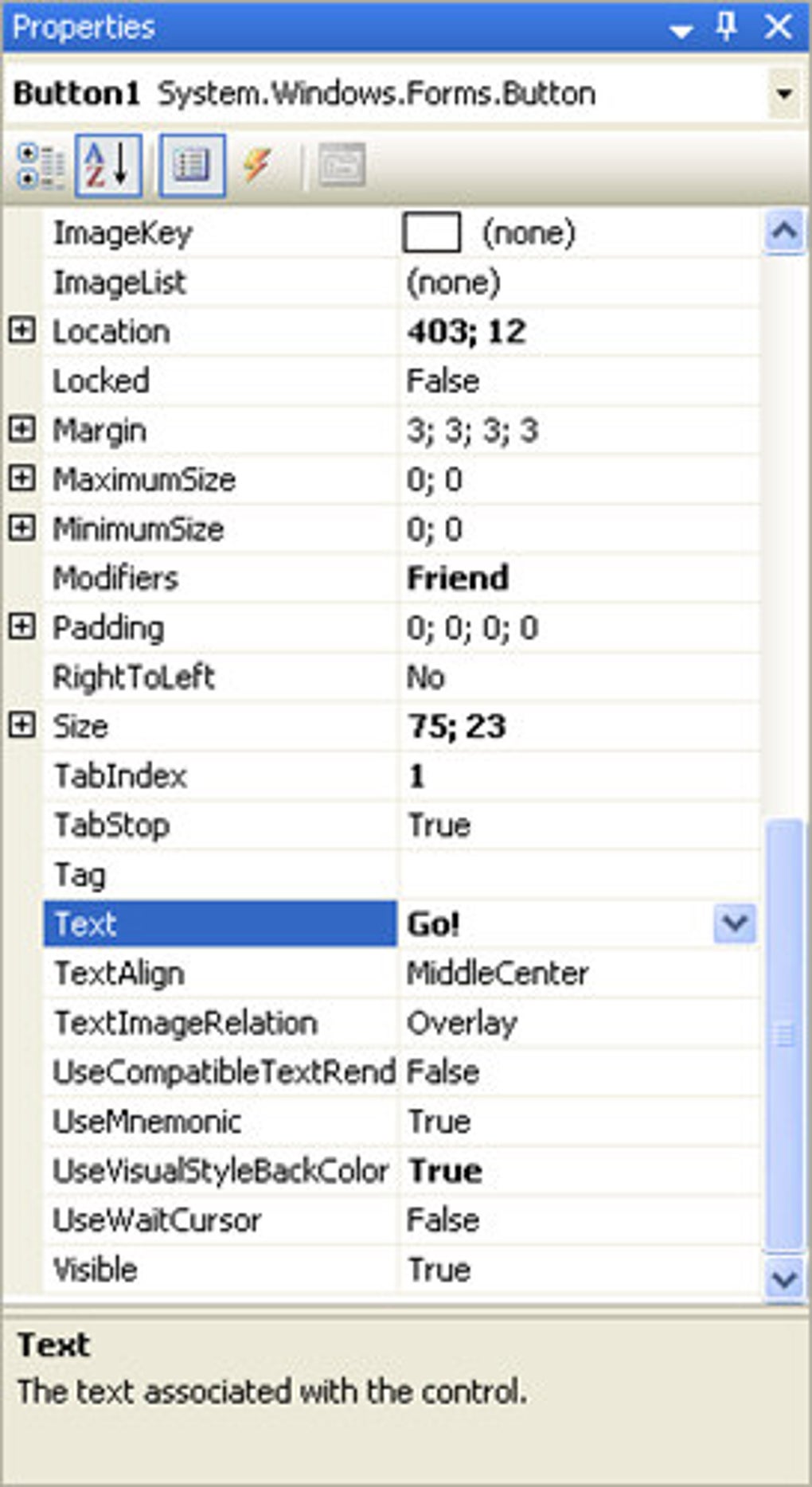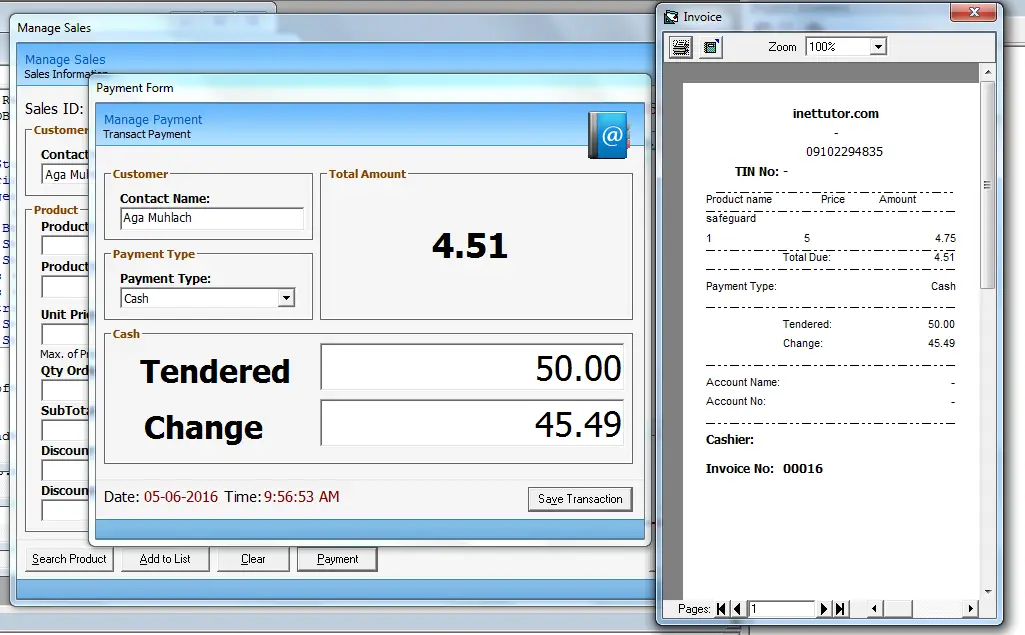The main difference between Visual Basic and Visual C++ is that Visual Basic is an Object Oriented Programming Language while Visual C++ is an Integrated Development Environment (IDE).
Visual Basic is a user-friendly programming language developed by Microsoft. The final version of it was Visual Basic 6.0 before the release of Visual Basic .NET. On the other hand, Visual C++ is an IDE specifically designed to write and debug C++ programs. Visual C++ is a part of Visual Studio IDE.
Every numeric data type in Visual Basic has a method that can be used to convert a string to that numeric data type. A) ConvertString B) FromString C) ToLiteral D) TryParse. are computer memory locations where programmers can temporarily store data while an application is running. A) Objects B) Variables C) Data types D) Classes. Visual Basic Code Snippets and Utilities In the following section, you can find a variety of Visual Basic code samples. For every sample, you can download the entire project for opening in Visual Basic 6.0. A binary search algorithm in visual basic: a c# overloaded method to calculate an md5 hash in visual basic: a c# rss feed retriever sample in visual basic: a calendar example similar to windows date and time properties in visual basic: a class for searching datagrids in visual basic: a class for system, logical drivers, memory, display drivers.
Key Areas Covered
1. What is Visual Basic
– Definition, Functionality
2. What is Visual C++
– Definition, Functionality
3. What is the Difference Between Visual Basic and Visual C++
– Comparison of Key Differences
Key Terms
IDE, OOP, Visual Basic, Visual C++
What is Visual Basic
Visual Basic is an object-oriented programming language developed by Microsoft. It is based on the BASIC programming. Moreover, Visual Basic supports various data types including Boolean, Byte, Char, Date, Decimal, Double, Integer, Long, Short, and String.


Since it supports object-oriented programming, everything in Visual Basic is an object. All objects inherit from the base class Object. Furthermore, this language allows implementing OOP concepts such as Encapsulation, and Inheritance. The programmer can use classes, objects, constructors, destructor, etc. in his program. Moreover, Visual Basic provides features such as file, exception and event handling. It also allows accessing databases via Visual Basic programs.
What is Visual C++
Visual C++ is an IDE developed by Microsoft that supports C++ language. Originally, it was a standalone product, but later it became a part of Visual Studio. It mainly supports developing and debugging of C++ code.
Many applications require redistributable Visual C++ runtime library packages to function correctly. These packages are installed independently of applications. Therefore, multiple applications can use these packages after installing only once. The Visual C++ redistributable and runtime packages are commonly installed for standard libraries that many applications use.
What is the Difference Between Visual Basic and Visual C++
Definition
Visual Basic is a third-generation event-driven programming language from Microsoft for its Component Object Model (COM) programming model whereas Visual C++ is an IDE product from Microsoft to develop C++ programs. Thus, this is the main difference between Visual Basic and Visual C++.
Usage
Visual Basic allows object-oriented programming, supports Rapid Application Development (RAD) of Graphical User Interface (GUI) applications, provide access to databases, and supports web programming. On the other hand, Visual C++ allows developing and debugging C++ programs. Hence, this is another difference between Visual Basic and Visual C++.
Conclusion
In brief, Visual Basic refers to a programming language while Visual C++ refers to an IDE. The main difference between Visual Basic and Visual C++ is that Visual Basic is an Object Oriented Programming Language while Visual C++ is an Integrated Development Environment (IDE).
Reference:
1. “Visual Basic.” Wikipedia, Wikimedia Foundation, 19 Dec. 2018, Available here.
2. “Microsoft Visual C .” Wikipedia, Wikimedia Foundation, 8 Dec. 2018, Available here.
Image Courtesy:
1. “906838”(CC0) via Pixabay
2. “Microsoft Visual C++ 2.0” by Luigi Rosa (CC BY-SA 2.0) via Flickr
Performs a logical conjunction on two Boolean expressions, or a bitwise conjunction on two numeric expressions.
Visual Basic C# Tutorials
Syntax

Parts
result
Required. Any Boolean or numeric expression. For Boolean comparison, result is the logical conjunction of two Boolean values. For bitwise operations, result is a numeric value representing the bitwise conjunction of two numeric bit patterns.
expression1
Required. Any Boolean or numeric expression.
expression2
Required. Any Boolean or numeric expression.
Remarks
For Boolean comparison, result is True if and only if both expression1 and expression2 evaluate to True. The following table illustrates how result is determined.
If expression1 is | And expression2 is | The value of result is |
|---|---|---|
True | True | True |
True | False | False |
False | True | False |
False | False | False |
Note
In a Boolean comparison, the And operator always evaluates both expressions, which could include making procedure calls. The AndAlso Operator performs short-circuiting, which means that if expression1 is False, then expression2 is not evaluated.
When applied to numeric values, the And operator performs a bitwise comparison of identically positioned bits in two numeric expressions and sets the corresponding bit in result according to the following table.
If bit in expression1 is | And bit in expression2 is | The bit in result is |
|---|---|---|
| 1 | 1 | 1 |
| 1 | 0 | 0 |
| 0 | 1 | 0 |
| 0 | 0 | 0 |
Note
Since the logical and bitwise operators have a lower precedence than other arithmetic and relational operators, any bitwise operations should be enclosed in parentheses to ensure accurate results.
Data Types
If the operands consist of one Boolean expression and one numeric expression, Visual Basic converts the Boolean expression to a numeric value (–1 for True and 0 for False) and performs a bitwise operation.
For a Boolean comparison, the data type of the result is Boolean. For a bitwise comparison, the result data type is a numeric type appropriate for the data types of expression1 and expression2. See the 'Relational and Bitwise Comparisons' table in Data Types of Operator Results.
Visual Studio 101
Note

The And operator can be overloaded, which means that a class or structure can redefine its behavior when an operand has the type of that class or structure. If your code uses this operator on such a class or structure, be sure you understand its redefined behavior. For more information, see Operator Procedures.
Example
The following example uses the And operator to perform a logical conjunction on two expressions. The result is a Boolean value that represents whether both of the expressions are True.
The preceding example produces results of True and False, respectively.
Example
101 Visual Basic And C# Code Samples Download
The following example uses the And operator to perform logical conjunction on the individual bits of two numeric expressions. The bit in the result pattern is set if the corresponding bits in the operands are both set to 1.
The preceding example produces results of 8, 2, and 0, respectively.
See also
